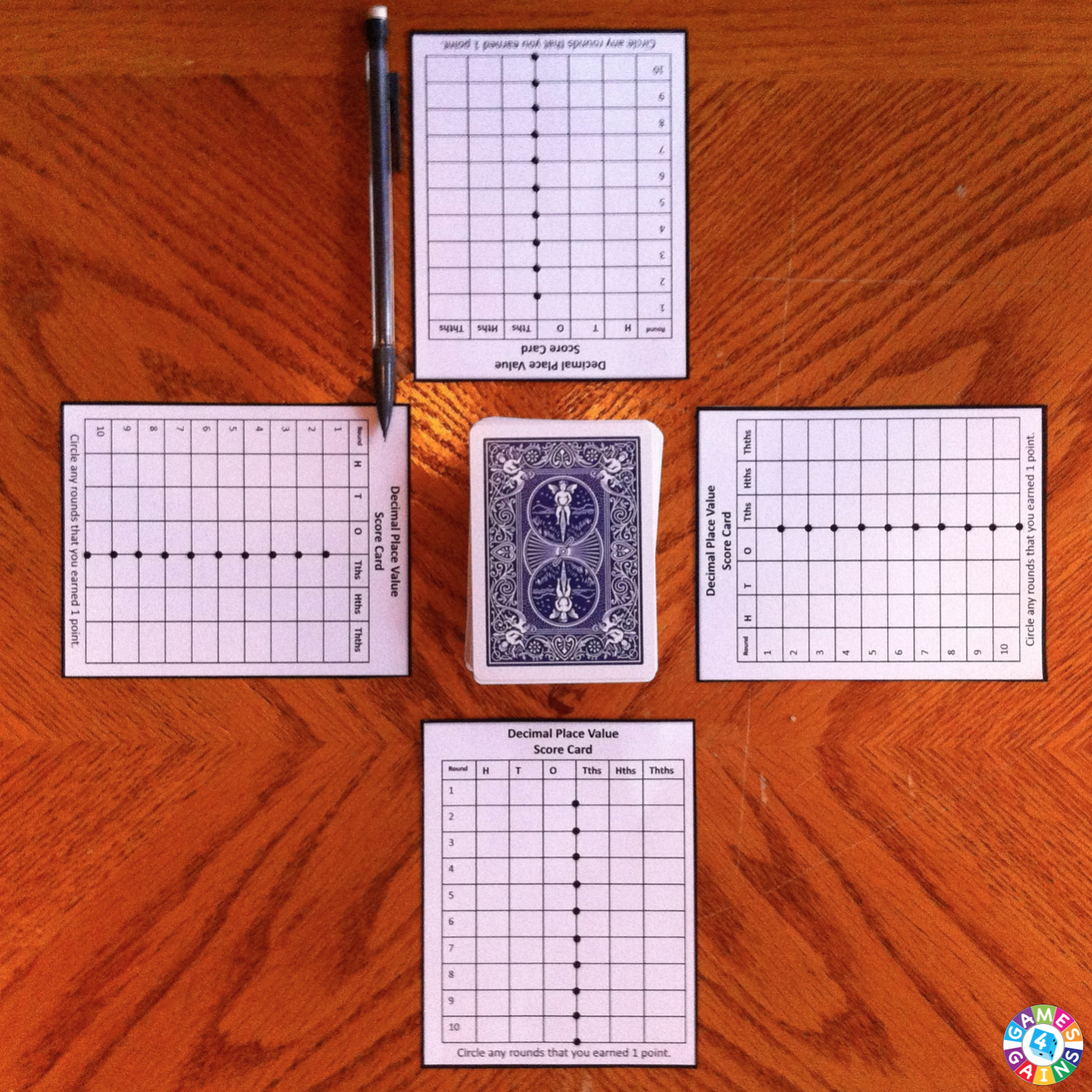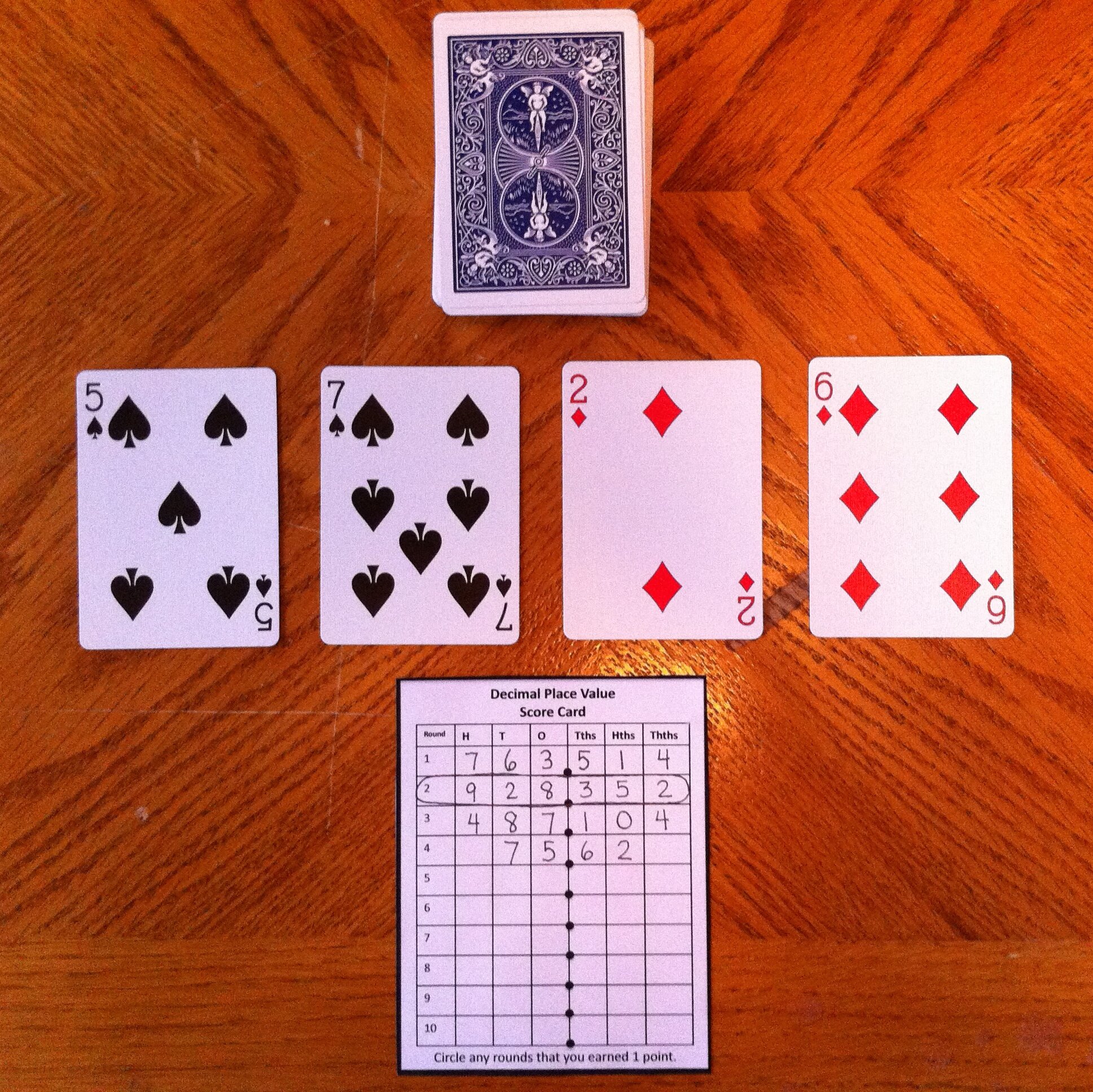Decimal Place Value with Playing Cards
In this quick and easy game, students compete against one another to form the highest decimal number using playing cards. This game challenges students to think critically about the place value of digits in decimal numbers and how each digit's placement impacts the total value of the number. It's also a strategic game that keeps students thinking about the odds of drawing certain cards as they try to form the highest decimal number (perhaps good for a probability lesson too!).
Note: You can also play this game with lower grade levels by replacing the place value columns with hundred thousands, ten thousands, thousands, hundreds, tens, and ones.
Materials needed:
Score sheet - 1 per player (click here to download a free copy, or you can have students draw the template shown right into their notebooks)
Deck of regular playing cards (remove all Jacks, Queens, Kings, and Jokers)
Pencil for each player
Score sheets, a deck of cards, and pencils are all that are needed for this fun game!
Playing the game:
Number of players: 2-4
1. Shuffle the deck of cards. Be sure that all face cards and Jokers have been removed. Place the deck of cards in a pile facedown in the center of the table.
2. Each player takes a turn taking one card from the top of the pile. Players place the card face-up directly in front of them so that all players can see each card that has been drawn.
3. Each player looks at the number on the card that he/she drew from the pile. Then, each player looks at "Round 1" on their score sheet to decide which place value to assign the number. The player can only write that number under one place value column (hundreds, tens, ones, tenths, hundredths, or thousandths). Players should not show their opponents where they wrote the number on their score sheet. Once each player has written down the number in a place value column, it cannot be changed at any point during the game.
In this game, drawing the 10 card does not represent 10, but represents the number 0.
Each player has to make decisions about where to place the digit as he/she receives a card. Once written, the digit is locked in.
4. Players repeats steps 1-3 until all 6 place value columns have been filled in (which means that 6 cards should have been drawn by each player).
5. Players show their final number to their opponents to determine who has written the highest number.
6. The player with the highest number must read his/her decimal aloud correctly (i.e. one hundred and seven thousandths, not one hundred point zero zero seven) in order to score the points.
If the player with the highest number reads his/her decimal aloud correctly, he/she gets 1 point for the round. The other players do not get any points.
If the player with the highest number does not read his/her decimal aloud correctly, he/she does not get any points. Every other player gets 1 point for the round.
7. Place all of the used cards back into the pile of cards and shuffle the entire pile again. Begin the next round by repeating the same steps. Play ends after 10 rounds have been played.
Did your students enjoy playing this game? We'd LOVE it if you'd share one of these images on social!





